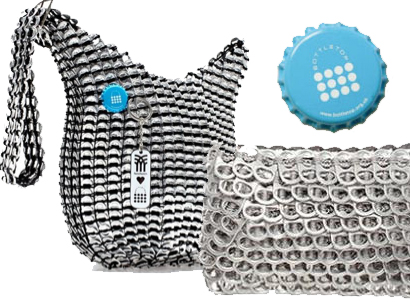Circular economy is the antonym of linear economy. Linear economy has been the dominant industrial model in our history and postulates production is followed by consumption that then ends up with the disposal of used products. As opposed to this, circular economy seeks to rebuild capital, whether this is financial, manufactured, human, social or natural and sees products having a longer or a never-ending life that are either re-used as new inputs to create new products or shared and co-owned by different consumers.
Nigeria’s textile industry used to be – possibly still is – the African continent’s third largest after that of Egypt and South Africa. For one reason or another, the first two are fairly well established among brands of all colours and types as potential – and actual – sourcing destinations. Egyptian cotton is well renowned, as is their industry for jersey goods. Also ‘Made in South Africa’ is not uncommonly found in clothing labels.
Uncertainty is widespread in the cotton market: Textile Exchange published organic cotton production figures. The current Farm & Fiber Report shows a drastic decrease. Simon Ferrigno on the current developments of the organic cotton sector and about his predictions for the future of the eco fashion market.
Parents complain about the prices of school uniforms. Yet - are they also considering that too cheap a price may actually ... get them school uniforms for their children, made by children of that same age?
In this article a very brief run down of the main varieties of ‘better’ cotton that exist: Cotton made in Africa, Better Cotton Initiative, Organic and Fairtrade cotton, and 2 more generic good practise farming systems.
Khadi is an Indian fabric par excellence. Hand-made from start to finish it has for centuries been the livelihood of rural communities. But the industry is in decline. Interview with Shailini Seth-Amin, CEO of MoralFibres, a company set to re-invent Khadi.
Arabel Lebrusan trained in the art of jewellery in the most prestigious European schools, and has collaborated throughout her career in projects with international companies such as Swarowski. Today, she leverages all her experiences and her knowledge about artisanal techniques, apply them to contemporary designs.
In Tunisia, like across most of the Maghrib region, textiles, their significance and methods of production remain a firm part of the country’s identity and history. A portrait.
Anna Grindi was coveted dress maker from Tempio Pausania, a town in northern Sardinia. And enchanted by the possibility of cork for fashion. Her obsession lead to the development of cork fabrics that today are the foundations to her very successful company Suberis, turning over millions of Euros. A portrait.
Cork is one of the most sustainable natural materials extant. Portugal supplies about two thirds of the world's cork, but the industry has been under pressure in the past few decades. This post shows how innovative companies have found application for the material in the realm of fashion.
Cork is one of the most sustainable natural materials extant. Portugal supplies about two thirds of the world's cork, but the increased use of plastic bottle stoppers for wine, instead of cork, poses a threat to the country's industry. This post presents some data around cork and describes the bigger picture. The follow up post will look at how innovative uses of cork find application in fashion.
Algha Works are Britain’s last metal spectacle frame manufacturer, operating from Fish Island - close to the 2012 Olympics' site - for the past century. A portrait.
Resting the case for innovation.
“Globalization presumes sustained economic growth. Otherwise, the process loses its economic benefits and political support.” (P. Samuelson). There is an evident illogic, impossibility, of the traditional 'economic growth' lemma.
Can marketing be ethical? Far too many times I am asked this question or come across people who strongly believe that marketing simply cannot. Actually, still today, for many, marketing is evil. I think that this conviction is the result of two main factors.
The developments in the British Midlands of the industrial revolution have coined the textiles industry possibly like no other.
It was is this area that we find the roots to the modern textile industry, including case studies that (nearly) could be dated from our modern times. From archives and historical records the industrial revolution left behind in the area, we can gain many an insight that will trigger a simple ‘déjà-vu’ when taking note of news about textile factories from the Far East that with regularity hit our headlines.
J&R Designs in Homerton is a small factory in London's East End, the only remaining of its kind, run by the Persaud family, and which specialises in hand crafted quality leather handbags manufacturing. A portrait.
In the briefest of time, Bottletop's iconic bags have not only made into the limelight of fashion weeks supported by VIP, but their business model and approach has earned the organisation a shortlisting for the Observer Ethical Awards 2012, the British 'Green Oscars'.
Perfumery can be a dirty business. In this interview with Marina Barcenilla, founder and creative perfumer of Glastonbury-based The Perfume Garden, we investigate the company's approach to ethical and vegan ingredient sourcing.
Are natural perfumes the panacea for sustainability in the fragrance industry? Are there good sides, not only bad ones, to synthetics ingredients in perfumes? And what about health impacts? A brief overview of the most important issues.
Julius Walters of Stephen Walters & Sons is a ninth generation weaver of a family business founded 1720. This is the company that wove the silk for the Queen’s coronation robes and for Princess Diana’s wedding dress.


